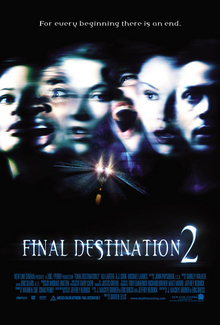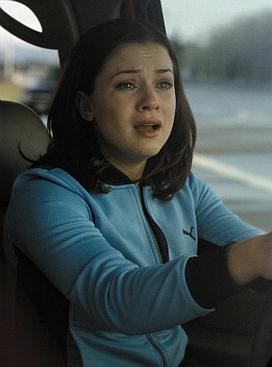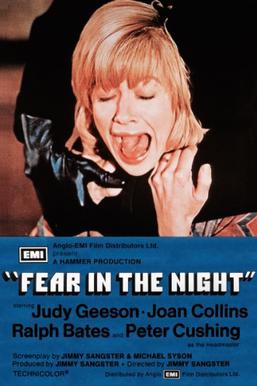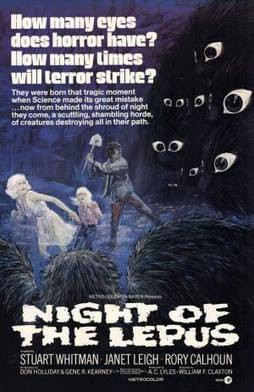
Heathers is a 1988 American teen black comedy film written by Daniel Waters and directed by Michael Lehmann, in both of their respective film debuts. The film stars Winona Ryder, Christian Slater, Shannen Doherty, Lisanne Falk, Kim Walker, and Penelope Milford. Its plot portrays four teenage girls—three of whom are named Heather—in a clique at an Ohio high school, one of whose lives is disrupted by the arrival of a misanthrope intent on murdering the popular students and staging their deaths as suicides.

Suspiria is a 1977 Italian supernatural horror film directed by Dario Argento, who co-wrote the screenplay with Daria Nicolodi, partially based on Thomas De Quincey's 1845 essay Suspiria de Profundis. The film stars Jessica Harper as an American ballet student who transfers to a prestigious dance academy but realizes, after a series of brutal murders, that the academy is a front for a supernatural conspiracy. It also features Stefania Casini, Flavio Bucci, Miguel Bosé, Alida Valli, Udo Kier, and Joan Bennett, in her final film role.

Heather Elizabeth Langenkamp is an American actress, writer, director, disc jockey, and producer. Although she has acted in many film genres, she is primarily known for her work in horror films, in addition to her work on television sitcoms. Langenkamp has been referred to as a scream queen and was inducted into the Fangoria Chainsaw Hall of Fame in 1995.

Final Destination 2 is a 2003 American supernatural horror film directed by David R. Ellis. The screenplay was written by J. Mackye Gruber and Eric Bress, based on a story by Gruber, Bress, and series creator Jeffrey Reddick. It is the sequel to the 2000 film Final Destination and the second installment of the Final Destination film series. The film stars Ali Larter, A. J. Cook, and Michael Landes.

Amanda Wyss is an American actress. She began her career in the early 1980s in teen-oriented roles such as Lisa in the coming-of-age comedy film Fast Times at Ridgemont High (1982), Tina Gray in the slasher film A Nightmare on Elm Street (1984), and Beth in the black comedy film Better Off Dead (1985). Additionally, she had a supporting role as investigative reporter Randi McFarland in the television series Highlander: The Series (1992–1993). She is also known for playing Woody's ex-girlfriend, Beth, in two episodes of Cheers in the mid-1980s.

Venom is a 2005 American horror film directed by Jim Gillespie and starring Agnes Bruckner, Jonathan Jackson, Laura Ramsey, Meagan Good, D. J. Cotrona and Method Man. It is the final film by Dimension Films to be released during their Miramax tenure before The Walt Disney Company, Miramax's parent company at the time, sold Dimension to The Weinstein Company (TWC) on October 1, 2005.

Motel Hell is a 1980 American comedy horror film directed by Kevin Connor and starring Rory Calhoun, Nancy Parsons, and Nina Axelrod. The plot follows farmer, butcher, motel manager, and meat entrepreneur Vincent Smith, who traps travelers and harvests them for his human sausages.

Murgatroyd is a surname among the English nobility, originating in Yorkshire. Its etymology, according to one source, is as follows: in 1371, a constable was appointed for the district of Warley in Yorkshire. He adopted the name of Johanus de Morgateroyde, or literally: Johanus of Moor Gate Royde or 'the district leading to the moor'. Another source says the place name means Margaret's road. In Old Norse, royd means "clearing". Although Moorgate in London was a gate with the road to the moor passing through, in Yorkshire, gate means "street", so Moor Gate Royd would be 'a clearing in the forest on the road to the moor'.

Kimberly Corman is a fictional character in the Final Destination series, portrayed by A. J. Cook. Kimberly serves as the protagonist of Final Destination 2. She is a college student from White Plains, New York, and is one of the survivors of the Route 23 pile-up.

Clear Marie Rivers is a fictional character from the Final Destination film series. Created by Jeffrey Reddick and portrayed by Ali Larter, the character first appeared in Final Destination (2000) as a high school senior who, after surviving a plane explosion foreseen by Alex Browning, assists him on "cheating Death" by rescuing the other survivors from their impending doom. Clear returns in the sequel Final Destination 2 (2003), where she aids Kimberly Corman in saving the new set of victims from the Route 23 pile-up. The character also appears in the novelizations of the two motion pictures.

Who Can Kill a Child?, released theatrically as Island of the Damned and Children of the Corn Tortilla in the US, and Would You Kill A Child?, Death Is Child's Play and Island of Death in the UK, is a 1976 Spanish horror film directed by Narciso Ibáñez Serrador. The film follows an English couple who find an island inhabited by maniacal children.

Elves is a 1989 American horror film directed by Jeffrey Mandel and starring Dan Haggerty, Deanna Lund, and Ken Carpenter.
Kerry Remsen is an American actress. She is the daughter of actor Bert Remsen and casting director Barbara Joyce Dodd, sister of Ann Remsen Manners and has been married to Ron Cates since 2006. She attended the U.S. Grant High School in Van Nuys, California. She has appeared in well over twenty different films and television programs. She was a regular and prominent cast member of Leah Laiman's 1990s soap opera, Tribes. She is also most remembered by horror fans for her small part in A Nightmare on Elm Street 2: Freddy's Revenge, and supporting and co-starring roles in Pumpkinhead and Ghoulies II.

@

Deadtime Stories is a 1986 American horror comedy anthology film co-written and directed by Jeffery Delman in his directorial debut. In the film, a babysitting uncle tells his nephew three stories. The first story involves a slave used by two witches, who are attempting to resurrect their sister. The second story is based on "Little Red Riding Hood", where a teenage girl mistakenly picks up a werewolf's medicine for her grandmother. The third story, based on "Goldilocks", tells about three escaped mental patients who share their hideaway with a murderess.
The Hobyahs is a fairy tale collected by Mr S. V. Proudfit, in Perth. Joseph Jacobs included it in More English Fairy Tales. His source was American Folk-Lore Journal, iv, 173.

Fear in the Night is a 1972 British psychological horror film directed, produced, and co-written by Jimmy Sangster and produced by Hammer Film Productions. The film stars Judy Geeson as a psychologically-fragile woman who, upon relocating to a rural boarding school where her husband has taken a job, finds herself being tormented by a mysterious figure with a prosthetic arm. Peter Cushing and Joan Collins, respectively, also star as the school's mysterious headmaster and his wife.

Night of the Lepus is a 1972 American science fiction horror film directed by William F. Claxton and produced by A. C. Lyles. Based upon Russell Braddon's 1964 science fiction novel The Year of the Angry Rabbit, the plot concerns an infestation of mutated rabbits.

The Nesting is a 1981 American supernatural horror film directed and co-written by Armand Weston, and starring Robin Groves, Michael Lally, John Carradine and Gloria Grahame in her final film role. Its plot follows an agoraphobic novelist who rents a rural mansion that she comes to find is haunted by the prostitute victims of a mass murder that occurred there in the 1940s.

Bigfoot is a 2012 American made-for-television film co-produced by Asylum/Syfy.


















